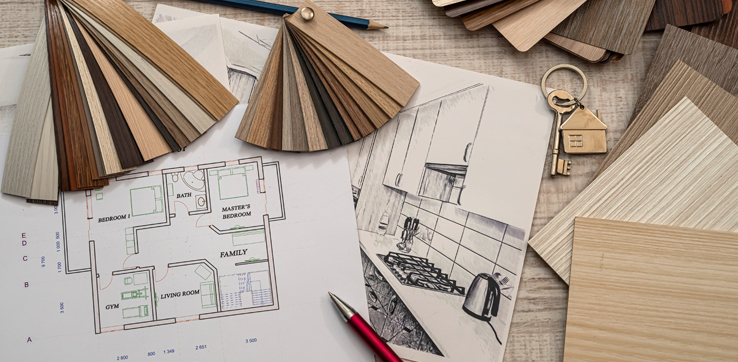Renewed. Refocused. Motivated.
After attending the AIA’s National Conference in mid-June, many of us at BRR carry those sentiments with us these days. The conference was an opportunity for us to advance our professional learning, and listen and engage in meaningful conversations about the architecture profession and its impact on society.
Here is a recap of several key themes which emerged during the conference:
Sustainability & Net Zero
AIA has set its 2030 Commitment, which is a climate strategy that outlines a set of standards and goals for reaching net zero emissions in the built environment. Data shows the built environment creates 40 percent of the world’s emissions, therefore architects, engineers, and owners play a key role in carbon emission reduction.
However, owners do not necessarily have to go ‘all in’ in terms of sustainability and net-zero practices. There are multiple ways to reach net zero –and it’s important to explore which factors of sustainability and net zero are financially feasible for the project. Can net zero be achieved through better building materials such as locally sourced or low embodied carbon materials? Through day-to-day operations? Through energy usage?
Owners could consider initiating what they can do from a carbon reduction perspective which will begin to contribute to the main goal. Start small. Explore more efficient insulation, or better building envelopes, and upgrade air filtration. If the change is rolled out across 10,100 or even 500 stores, that leads to a massive carbon footprint reduction, and typically only leads to a small increase in upfront costs. Focusing on smaller tasks makes what feels like an overwhelmingly large sustainability goal much less daunting.
Explore the Community’s Needs
While we have a passion for the built environment it turns out that many members of society may not view architects or architecture through a positive lens, especially in the urban core.
Many times, once the scaffolding around a project is removed, community members see an expensive retail store or high-end hotel which they cannot access because it’s too expensive. In turn, it creates a division between the project and the neighborhood. Developers and owners have the power to build projects that are inclusive and which benefit the surrounding community. Though architects do not discourage designing beautiful buildings or facades, we might also encourage a simple alteration that may benefit the broader community. We could make sure that there’s plenty of room on a sidewalk so that pedestrians can navigate around tables and chairs, and replant trees or include green space to foster community gatherings. Approaching each project with problem-solving and an inclusive mentality often yields greater success and outcomes.
Early Collaboration Pays Off
It’s no secret – collaboration can improve the process of a project and early collaboration often improves the end result. BRR, in tandem with AIA, encourages owners to engage with general contractors and community stakeholders much sooner in the course of the project. Here’s why:
If a GC is brought in during the planning stages, its team may identify materials or methods which can reduce overall project costs. If the community is part of the planning process, the project might result in a better design and therefore receive more engagement from local neighbors. The theory is: if people love the building they will take care of the building, which has an indirect impact on sustainability. When we engage in these conversations early in the design, everyone can benefit from the experience.
We were inspired by having the opportunity to attend such an important industry conference on behalf of BRR, and we brought these insights back to our colleagues and our clients. Did you attend AIA’s National Conference? We’d love to hear from you and continue the discussion.



